Part II of the story of Our Lady of Guadalupe, part of the Spanish colonial appropriation of the Aztec (or Mexica) Earth Mother Tonantzin: The future St. Juan Diego Cuauhtlatoatzin explained to the Bishop of Mexico City how the Virgin appeared to request a temple be built at Tepeyac in her honor. See Part I of the story.
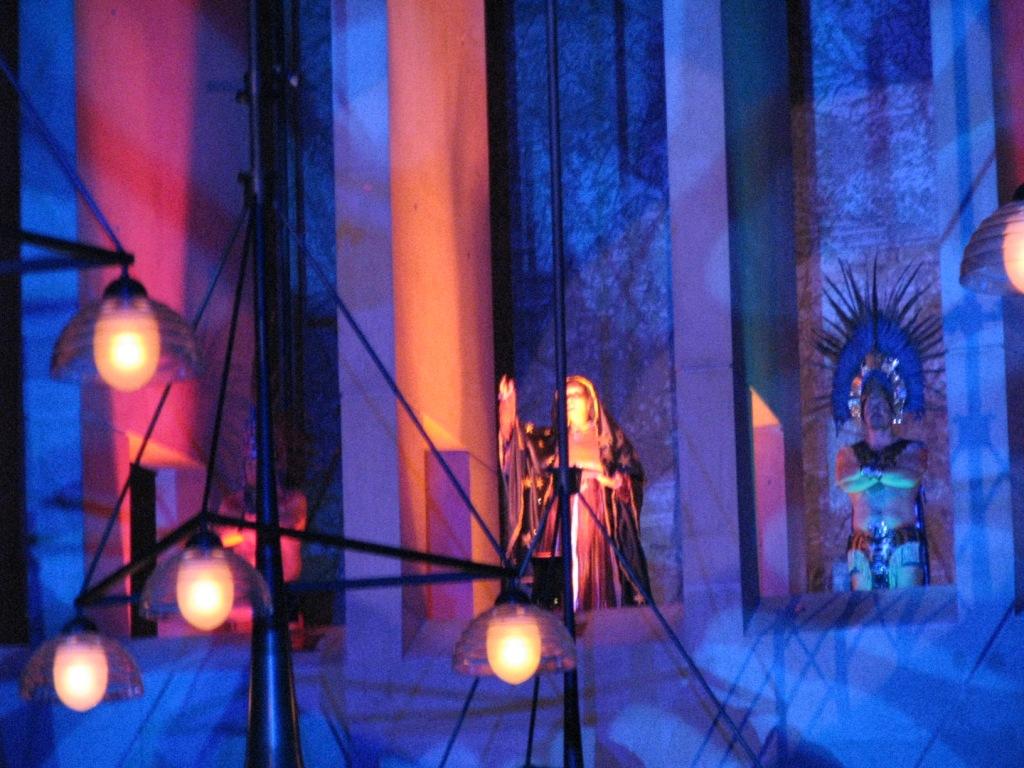

Part II – Continued from “The Apparitions of An Aztec Goddess”
Continued from Part I – Virgin of Guadalupe: The Apparitions of an Aztec Goddess (link)
December 12th on the Roman Catholic calendar is the feast day in honor of Our Lady of Guadalupe, and perhaps two million people pilgrimage to Mexico City to observe the festival.
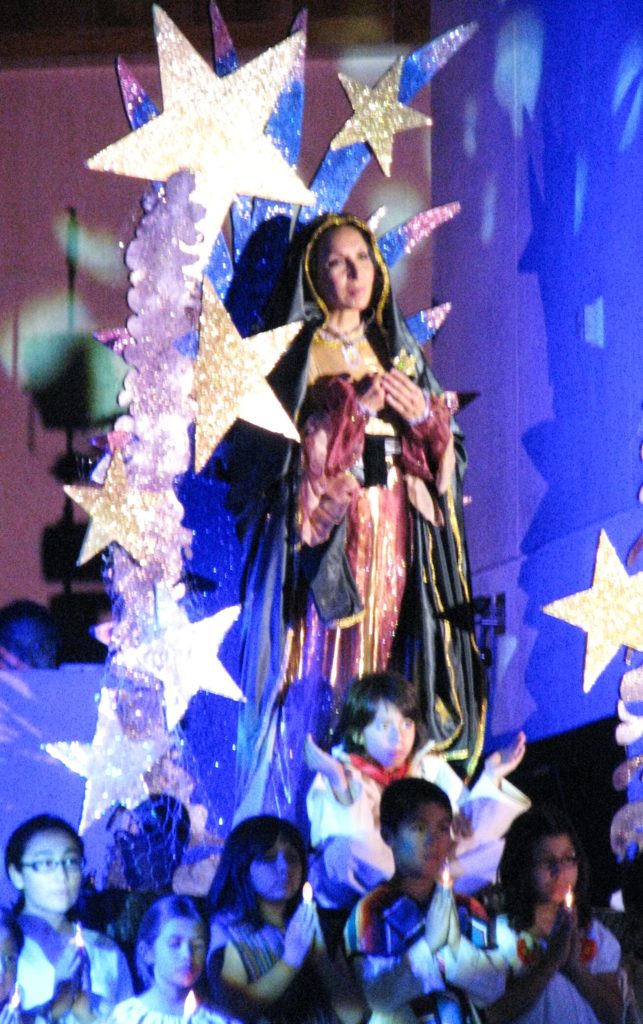

The legend of Guadalupe, called “Nican Mopohua” (Here It Is Told), centers around an Indian peasant from the hillside Mexican village of Tepeyac. A Spanish Catholic convert baptized as Juan Diego, he experiences a series of visions of an obscure Aztec goddess Tonantzin (“Our Revered Mother”). Repeated appearances challenge his faith and that of his newly adopted post-Spanish-conquest church, the latter thereafter associating the goddess with adoration of the Virgin Mary.
The following (Part II) was staged by the Latino Theater Company at the Cathedral of Our Lady of the Angels, in Los Angeles, California on December 8, 2010. Directed by José Luis Valenzuela. Adapted from “Nican Mopohua” by Evelina Fernández and edited here by Jack Eidt. “La Virgen de Guadalupe-Tonantzin” is played by Suzanna Guzmán. “Juan Diego” is played by Sal Lopez.
Juan Diego had explained to the Bishop of Mexico City, Don Fray Juan de Zumárraga, how the Virgin appeared and requested him to ask the Bishop to build a temple at Tepeyac in her honor. Juan Diego’s own Indigenous people have rejected his claims and excluded him from their ritual dance paying respect to Tonantzin, the Nahuatl Earth Mother.

Watch this video on YouTube
Juan Diego, a humble but respected peasant, is asked by the Bishop to produce a sign that he is in fact sent directly from the Divine Mother.
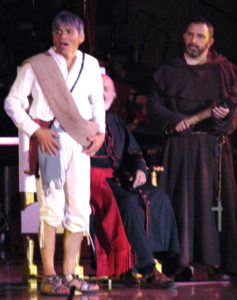

One of the Friars believes this is a plot by the Indians to get a church built to recognize a pagan deity. Although the Bishop is more understanding, he wants proof. He orders Juan Diego to tell Our Lady to send him red Castilian roses that do not exist in the Americas. The Bishop sends servants to follow Juan Diego and report back. When one loses sight of Juan Diego, she is frightened and tells the friars he disappeared into thin air. She thinks he is a “brujo” or sorcerer. Her companions decided they would punish Juan Diego for his blasphemy.
Juan Diego’s uncle, Juan Bernardino, is dying of smallpox. The Indians believe he is dying because the friars baptized him. Citali confronts Juan Diego. She is against losing the ancient traditions and way of life. Juan Diego explains that the Mother of God has appeared to him and will help them. Like the friars, the Indian community doubts him. Juan Bernardino asks Juan Diego to bring him a confessor from Tlatilolco, near Mexico City, because he feels death approaching.
Juan Diego departs from Juan Bernardino’s Dance with Death, and passes the little hill which ended the mountain range, on the side that the sun sets on, where he always passed before. Filled with doubt, Juan Diego cries to La Virgen for help.
“Where are you going, my youngest-and-dearest son? Where are you headed for?” the Virgen asks.
“I must tell you, my Beloved Maiden, that one of your servants, my uncle, is very ill,” responded Juan Diego.
As soon as she heard the explanations of Juan Diego, the Merciful Perfect Virgin answered him:
“Listen, put it into your heart, my youngest-and-dearest son, that the thing that frightened you, the thing that afflicted you is nothing. Do not let it disturb you. Do not fear this sickness nor any other sickness, nor any sharp and hurtful thing.”
The Virgin tells Juan Diego that the time for a miracle has arrived. She explains that Juan Bernardino is recovered. He would later find this was true. She instructs Juan Diego to climb to the top of the mountain where he will find the roses that the Bishop has requested.
Juan Diego doubts he will find flowers, for only thorny cactus and spiny bushes grow on the mountain that do not bloom during December frosts.
When he reaches the top, however, blooming, open, flowers of every kind astonish him, lovely and beautiful with a soft fragrance. Red Spanish roses are the most auspicious. He cuts and gathers them all, placing them in the hollow of his tilma (cuexäntli).
Juan Diego takes to the causeway, heading straight to Mexico City. He comes happily now, with a tranquil heart.
When he arrives at the Bishop’s residence, the doorkeeper and the other servants of the Governing Priest meet him. They pretend not to understand. They notice he carries something in the hollow of his tilma and he gave them a peek, seeing and smelling the exquisite flowers. They dared to grab them three times, to no avail.
Then the Bishop arrives and Juan Diego opens his tilma to deliver the roses, and the image of the Virgin is emblazoned on it – a symbol of hope for harmony and peace in the New World.
The very same image is preserved in her beloved sacred house at Tepeyac, which is called Guadalupe. Despite skeptics of yesterday and today, the painting on the tilma is considered of miraculous origin. Juan Diego is today known as St. Juan Diego Cuauhtlatoatzin.
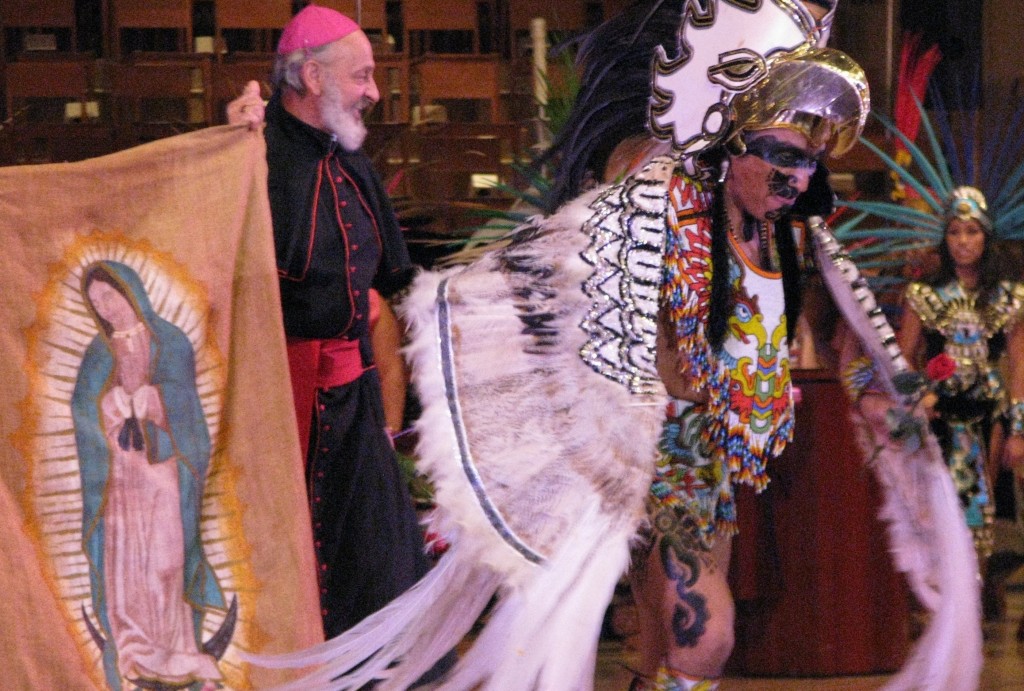

For the text translations of Nican Mopohua: http://weber.ucsd.edu/~dkjordan/nahuatl/nican/NicanMopohua.html
Updated 12 December 2024

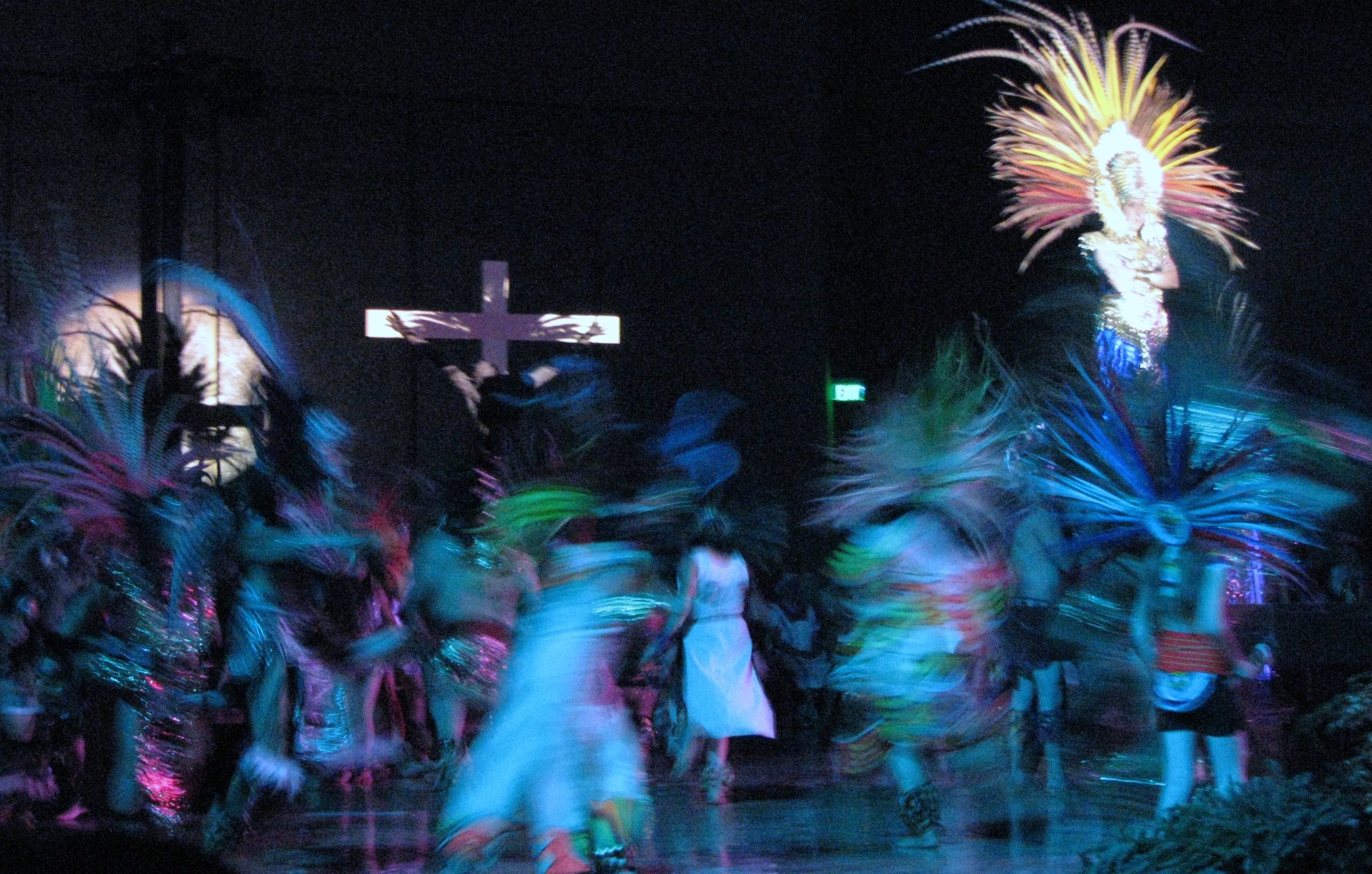

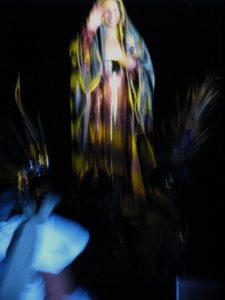
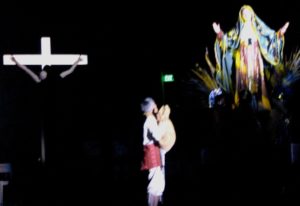


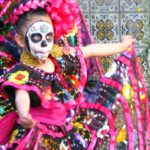

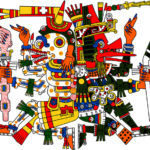






Pingback: Virgin of Guadalupe: The Apparitions of An Aztec Goddess | WilderUtopia.com